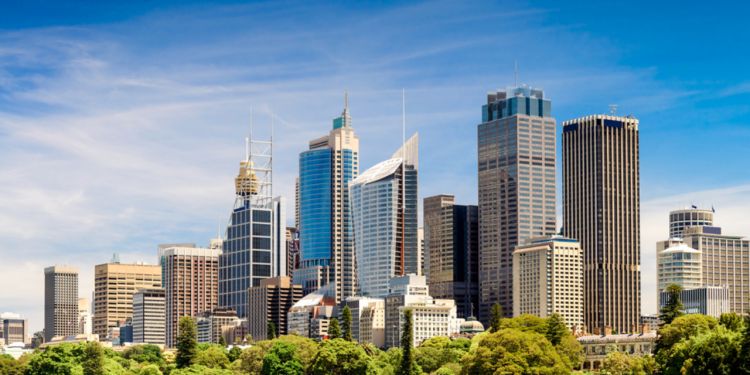
There are many types of flats, rentals, and houses in Australia, ranging from modern units to more traditional villas, from studio flats to large, multi-room homes. While Australia is regarded as an expensive place to live, it is also known for its high wages, which can make paying those prices a little easier. Properties in major cities such as Sydney, Melbourne, and Perth can be very costly, as can waterfront areas, but better value options can be found in regional areas or the suburbs further away from city centers.
Leases in Australia
The usual lease arrangements for residential properties in Australia are either fixed-term or periodic leases.
- A fixed-term lease typically lasts for a specific period, such as six or twelve months. During this time, the rent amount and lease terms cannot be changed unless both parties agree to a modification. At the end of the fixed-term lease, the lease can be renewed or terminated.
- A periodic lease, on the other hand, runs on a rolling basis, usually on a week-to-week or month-to-month basis. Rent can be increased, or lease terms can be modified with notice, provided the required notice period is given by the landlord.
Both types of lease require the tenant to pay rent on time, keep the property in a reasonable condition, and stick to the lease terms (which you will have time to review before committing to a property!). Landlords, in turn, have their own duties. They are responsible for maintaining the property, ensuring it is habitable, and responding to repair requests.
It's worth noting that tenancy laws and lease arrangements can vary between Australian states and territories, so it's important to check the specific requirements in your area.
CHOICE is Australia's leading consumer advocacy group, and they can offer advice on renter rights and protections.
Paying the bond in Australia
When signing a lease in Australia, you will often be asked to pay a bond equal to one month's rent as a security guarantee. If the rental unit is left in good condition, the rental bond will be returned, but if there is any damage to the property, the bond may not be refunded. It can be helpful to hire a professional cleaning team to come in when you are vacating the property to ensure it is left in a clean condition.
In most cases, the bond is lodged with a government bond authority or a rental bond board in the state or territory where the property is located. The bond authority holds the bond money until the end of the lease, and it is returned at the end, provided that there are no outstanding rent payments or damages to the property.
If there are any disputes between the tenant and the landlord regarding the bond money (i.e., disagreements over the amount to be refunded), the bond authority or rental tribunal can help to resolve the issue. It is important for tenants to keep a record of their bond lodgment receipt and any condition reports or photographs taken at the start of the lease to help protect their bond money. Some states or territories may have additional rules or regulations around rental bonds, including the requirement for landlords to provide a receipt for the bond payment or to register the bond within a specific timeframe. As an expat or foreign resident in Australia, familiarize yourself with the rental bond requirements in your state to avoid misunderstandings or disputes.
Finding a rental property in Australia
Whether you're searching from overseas or you're on the ground in your new city, the internet or real estate agencies are the best places to start your search for a property in Australia. Once you have found a potential rental property, you will need to apply to the landlord or rental agency.
Sometimes, a viewing will be held where you can see the house and register your interest in person. When attending a viewing, always make sure you look presentable – treat it as a job interview and present yourself as an ideal tenant.
Applications will usually ask for details such as your contact information, employment status, personal and professional references, and rental history. It can save time to have this information ready before starting your search, especially if you are trying to get overseas referrals from previous landlords. Rentals can sometimes be competitive (depending on where you're looking!), so having a strong application is very helpful, as is making a good impression at an in-person viewing.
The most popular websites for rental properties are Domain and Real Estate, which feature all main cities in Australia and allow you to filter your search by price, bedrooms, amenities, and location.
There are several other online search tools available for finding rental properties in Australia. Some more popular ones include:
- Rent.com.au
- Flatmates.com.au: This is specifically designed for people looking for shared accommodation.
- Gumtree: This is a classified ads website that also lists rental properties in Australia. It has a similar vibe to Craigslist in the USA.
Rent prices in Australia
The trend of rental prices in Australia varies depending on location and property type. In general, rental prices in Australia have been increasing over the past few years due to high demand and a shortage of rental properties in some areas. Rental prices in some capital cities, such as Sydney and Melbourne, have remained high, while other cities, such as Brisbane and Adelaide, have experienced more moderate growth in rental prices. Despite the variations in rental prices, the demand for rental properties continues to be strong, particularly in areas with high population growth and limited housing supply.
In 2023, Sydney has the highest average weekly rent for houses at AUD 600 and for units at AUD 490, while Canberra has the highest average weekly rent for units at AUD 530 and for houses at AUD 675. Melbourne has the lowest average weekly rent for units and houses at AUD 375 and AUD 445, respectively. The national average weekly rent for houses is AUD 499, while the average weekly rent for units is slightly lower at AUD 436.
Rental insurance in Australia
Renters insurance, also known as contents insurance, covers the cost of repairing or replacing personal belongings if they are damaged, lost, or stolen due to unforeseen events such as fire, theft, or natural disasters.
While landlords are responsible for insuring the building and any fixtures and fittings that they own, they are not responsible for insuring a tenant's personal belongings. This is where renters insurance can provide peace of mind. Policies vary but typically cover furniture, electronics, clothing, and jewelry, among other items. Some policies may also include cover for temporary accommodation if the rental property becomes uninhabitable due to an insured event.
As an expat or foreign resident, it is important to check the eligibility requirements for renters insurance in Australia, as some insurance providers may have specific requirements or restrictions for non-residents.
Short-term accommodation options in Australia
If you are waiting for the ideal house to come on the market or just want to rent for a short time, it might make sense to consider other accommodation options. Some Air BNBs allow month-long rental options that extend beyond the usual period of days or weeks. Even if they don't advertise, AirBNB owners may be amenable to this idea as it takes out the administrative and cleaning logistics involved in multiple short-term rentals.
House swapping is another option – this involves exchanging homes with someone else for a specified period. This can be a cost-effective way to travel and experience life in a different location. Websites such as HomeExchange and Love Home Swap facilitate house swaps in Australia.
Utilities in Australia
Water is usually covered by the landlord or owner, meaning you won't have to pay additional costs for water bills. The owners should also look after the routine maintenance of the property when required. Tenants will be required to pay for electricity and gas, as well as internet or cable. The Internet is widely accessible in Australia, and the government has been rolling out a national broadband network to improve the country's access and speed of connectivity. Utilities can be set up before moving into the property to ensure you are connected as soon as you arrive.
It is helpful to check if there is an air-conditioning system in the house or apartment you want to rent, as Australian summers can be scorching. Conversely, southern parts of the country can get very cold in winter, so modern installation, double-glazed windows, and central heating systems can be good to look out for when renting.
Furnished or unfurnished accommodation in Australia
Rental units are available furnished, unfurnished, or partially furnished. Australian rental units often do not include appliances such as refrigerators, washing machines, and/or clothes dryers, so double-check if this applies to your rental.
If you have ended up with an unfurnished rental, second-hand shops are an excellent way to acquire furniture quickly at a low cost. Perhaps you have moved country with a container full of furniture, but if you haven't, make sure to visit charity shops and peruse Facebook Marketplace and Gumtree for some excellent bargains.
We do our best to provide accurate and up to date information. However, if you have noticed any inaccuracies in this article, please let us know in the comments section below.
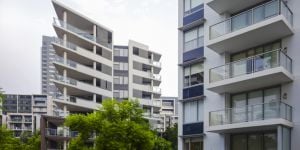
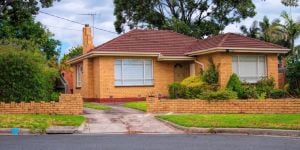

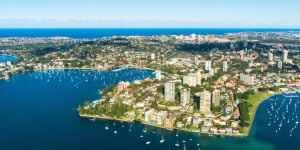

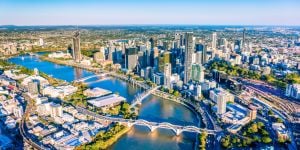

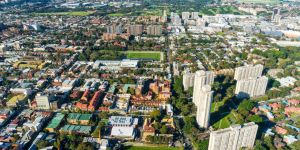




Comments